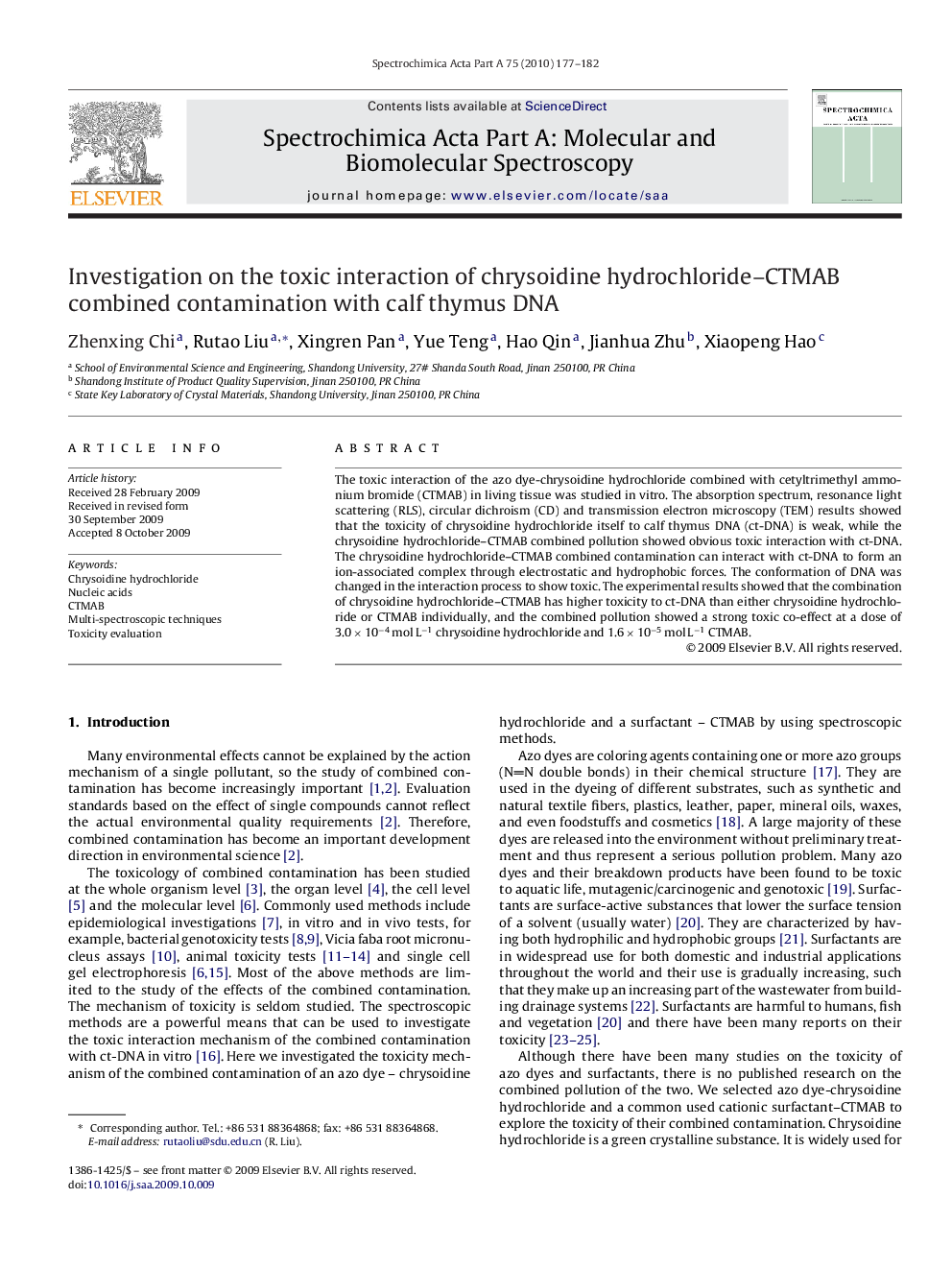| Article ID | Journal | Published Year | Pages | File Type |
|---|---|---|---|---|
| 1234202 | Spectrochimica Acta Part A: Molecular and Biomolecular Spectroscopy | 2010 | 6 Pages |
The toxic interaction of the azo dye-chrysoidine hydrochloride combined with cetyltrimethyl ammonium bromide (CTMAB) in living tissue was studied in vitro. The absorption spectrum, resonance light scattering (RLS), circular dichroism (CD) and transmission electron microscopy (TEM) results showed that the toxicity of chrysoidine hydrochloride itself to calf thymus DNA (ct-DNA) is weak, while the chrysoidine hydrochloride–CTMAB combined pollution showed obvious toxic interaction with ct-DNA. The chrysoidine hydrochloride–CTMAB combined contamination can interact with ct-DNA to form an ion-associated complex through electrostatic and hydrophobic forces. The conformation of DNA was changed in the interaction process to show toxic. The experimental results showed that the combination of chrysoidine hydrochloride–CTMAB has higher toxicity to ct-DNA than either chrysoidine hydrochloride or CTMAB individually, and the combined pollution showed a strong toxic co-effect at a dose of 3.0 × 10−4 mol L−1 chrysoidine hydrochloride and 1.6 × 10−5 mol L−1 CTMAB.
